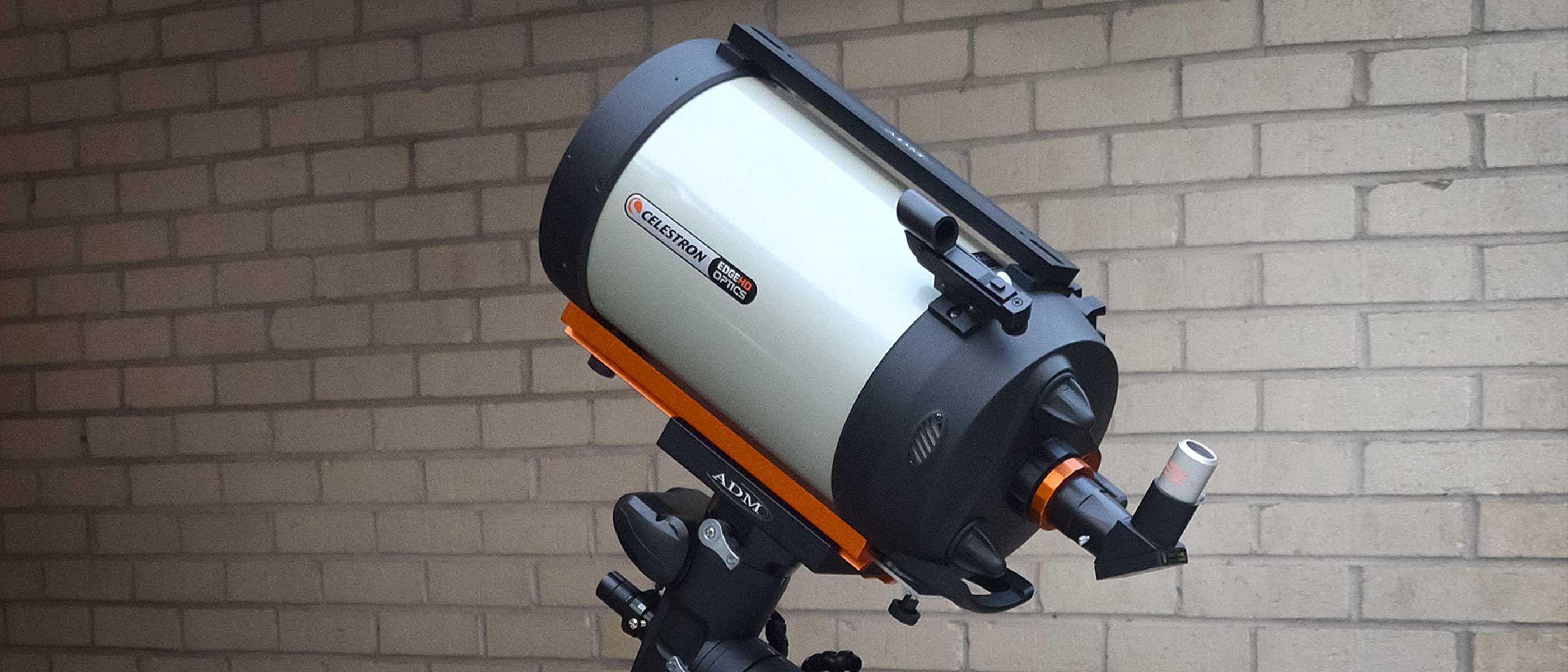The Celestron Advanced VX 8-inch EdgeHD is a versatile telescope system for intermediate to advanced amateur astronomers, but still small and lightweight enough to transport easily for observing out in the country. The 8-inch aperture is enough to view and photograph all types of celestial objects, and the computerized equatorial mount makes it easy to find and track them. Optical design: EdgeHD (improved Schmidt-Cassegrain with additional lens elements) Aperture: 203.
2 mm (8-in) Focal length: 2032 mm (80-in) Focal ratio: f/10 Eyepiece focal length: 40 mm (50×) Total kit weight: 61 lbs. (27. 67 kg) (breaks into 3 major components for transport) Mount type: German equatorial, computerized, with servo motors Optically, the EdgeHD system is excellent, and, with appropriate accessories, it couples to all types of cameras.
Views of Saturn and Jupiter are dramatic; globular clusters are resolved into stars; all the Messier Objects are plainly visible; and with a trained eye and a dark country sky, galaxies are visible down to 12th magnitude. It's a telescope you won't outgrow. Since this telescope is pitched to relatively advanced users, we are reviewing it from that point of view.
The author has been using a Celestron Advanced VX 8 Edge HD as their main equipment since 2014 and knows them well. As a long-time member of the user community, the author also knows that they are reliable. The EdgeHD optical system is the jewel in Celestron's crown, an improved Schmidt-Cassegrain with additional lens elements, and although the improvement is intended mainly for photography, we can see it visually with an eyepiece.
The computerized mount combines Celestron's NexStar firmware with a German-style equatorial mount whose main axis points at the celestial pole. This gives correctly-oriented tracking for photography and the ability to use different telescopes on the same mount. For example, our Advanced VX mount easily carries a camera with a telephoto lens in place of the EdgeHD.
The current version accepts both Vixen (narrow) and Losmandy (wide) dovetails. Compared to competitors, the Advanced VX mount head is both lightweight and relatively rugged, not easily damaged or thrown out of adjustment. The telescope, mount head and tripod separate easily for transport.
The mount requires 12-14V DC power, about 0. 5 amp most of the time, up to 3 or 4 amps momentarily when moving the telescope rapidly. We use a portable battery pack.
All good telescopes in the same size class give similar views, so this one is not much different from other well-made 6 to10-inch telescopes. Compared to conventional Schmidt-Cassegrains, though, we do think the EdgeHD is sharper, especially away from the center of the field. The supplied 40mm eyepiece gives 50 power, which seems low but is ideal for star clusters, nebulae, and galaxies.
Celestron assumes you'll buy more eyepieces and as such, we'd recommend two more, around 20mm (100x general purpose) and 10mm (200x for the moon and planets). In exceptionally steady air we've been able to use a 5mm eyepiece (400x) on close double stars. High-quality eyepieces bring out the best in this fine telescope, so don't skimp.
After proper setup, the mount finds celestial objects acceptably (well enough to get the object within the field of a 20-mm eyepiece) and tracks them very well. You can select objects on the hand controller, a PC running Celestron's PWI software, or numerous other sky map packages such as Stellarium . Astrophotographers will want to perform PEC training, as described in the manual, for even smoother tracking.
However, for long exposures of nebulae and galaxies, with an autoguider and guidescope sending constant corrections to the mount, the Advanced VX left me wanting (and eventually moving to) a heftier mount with more precise gears and less backlash. That is only a problem when the Advanced VX is carrying a telescope this large. It performs very well carrying a smaller telescope.
Because the Advanced VX is an equatorial mount, the setup is more than just the usual process of centering a couple of stars that the telescope automatically points to. You also have to aim its polar axis at Polaris , then refine the alignment by sighting stars and letting the mount's computer tell you the errors. This process, which Celestron calls 'All-Star Polar Alignment', is handy and impressively accurate, but you do have to identify bright stars.
If the computer says to center Enif and you center Alpheratz, you'll get incorrect results. That is the main difference between equatorial mounts and those that are more beginner-friendly. This is a fine telescope for viewing all types of celestial objects.
You can also attach a camera ( smartphone , DSLR , mirrorless , or astrocamera ) for images of the moon and, with care and skill, planets and deep-sky objects. One of the most satisfying things we've done is to take thousands of video frames of Jupiter, Saturn, or Mars with an astronomical video camera, then stack and sharpen them for a view far better than the human eye could get with the same telescope. This is an expandable system, taking many standard accessories, and you'll want one or two higher-power (shorter-focal-length) eyepieces immediately.
If you're a serious amateur astronomer developing a deep understanding of both the sky and the telescope, then this is an appealing product. The telescope is as good as you could wish for in its size range. The mount works well for everything except long-exposure deep-sky photography and there is plenty of room for growth with standard accessories and even, if need warrants, a heftier mount.
If your main interest is long-exposure astrophotography, skip the Advanced VX and get the same telescope on a Celestron CGX or Losmandy GM8 mount (at an appreciably higher cost). If you're new to astronomy and not yet good at recognizing stars, this may be a bit much; you can get very similar views with a Celestron 6 or 8-inch NexStar telescope on a fork-arm mount which is much easier to carry around and set up. .

